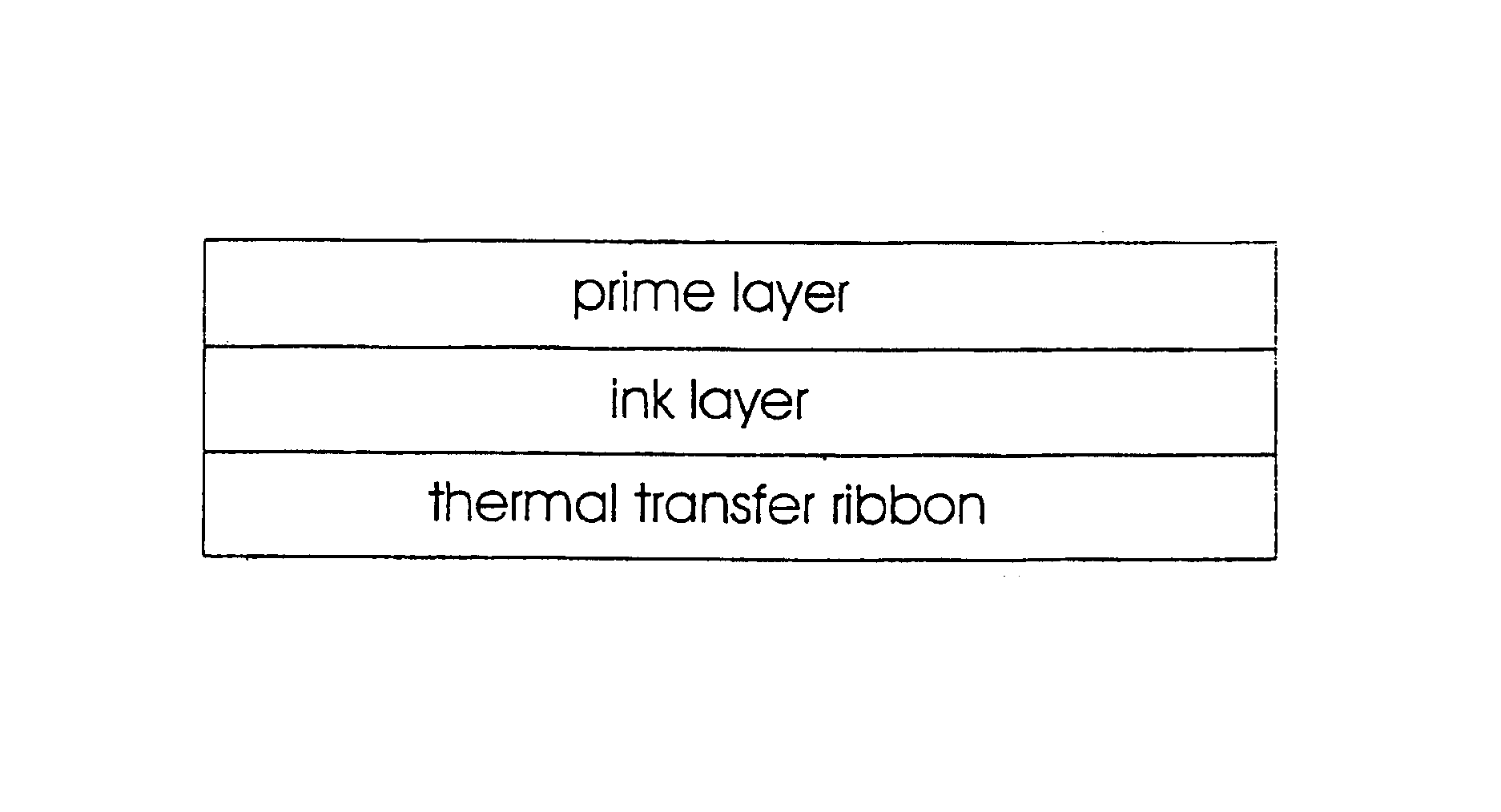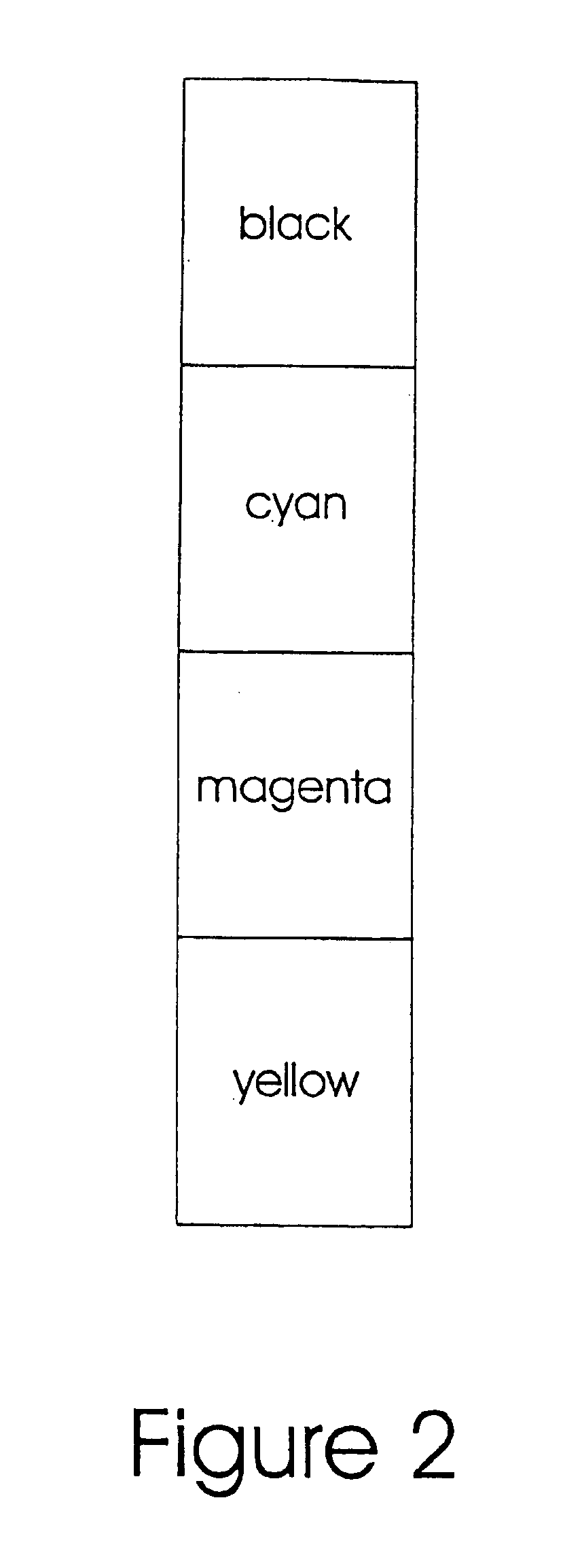Reactive dye printing process
a dye printing and dye technology, applied in the field of printing, can solve the problems of affecting the quality of dye printing, the inability to achieve high-quality images, so as to prevent premature or undetectable reaction, above the melting point of wax
- Summary
- Abstract
- Description
- Claims
- Application Information
AI Technical Summary
Benefits of technology
Problems solved by technology
Method used
Image
Examples
example 1
[0058]
WeightColored Ink PanelPercentColorant1-20Alkaline Substance0.5-10 Heat-activated Printing Additive0-30Binder:Wax and / or Wax-like Material5-70Polymeric Material0-20Exothermic Material0-20Foaming Agent0-2 WeightPrime Panel / LayerPercentAlkaline Substance0.5-10 Heat-activated Printing Additive0-30Binder:Wax and / or Wax-like Material5-80Polymeric Material0-20Exothermic Material0-20Foaming Agent0-2
example 2
[0059]
WeightColored Ink PanelPercentColorant1-20Alkaline Substance0.5-10 Heat-activated Printing Additive0-30Binder:Wax and / or Wax-like Material5-70Polymeric Material0-20Exothermic Material0-20Foaming Agent0-2 WeightPrime Panel / LayerPercentBinder:Wax and / or Wax-like Material10-90 Polymeric Material0-30Exothermic Material0-20Foaming Agent0-2
example 3
[0060]
WeightColored Ink PanelPercentColorant10Alkaline Substance5Heat-activated Printing Additive15Binder:Wax and / or Wax-like Material65Polymeric Material3Exothermic Material2WeightPrime Panel / LayerPercentHeat-activated Printing Additive5Binder:Wax and / or Wax-like Material87Polymeric Material4Exothermic Material2Foaming Agent2
PUM
| Property | Measurement | Unit |
|---|---|---|
| melting point | aaaaa | aaaaa |
| temperature | aaaaa | aaaaa |
| diameter | aaaaa | aaaaa |
Abstract
Description
Claims
Application Information
 Login to View More
Login to View More - R&D
- Intellectual Property
- Life Sciences
- Materials
- Tech Scout
- Unparalleled Data Quality
- Higher Quality Content
- 60% Fewer Hallucinations
Browse by: Latest US Patents, China's latest patents, Technical Efficacy Thesaurus, Application Domain, Technology Topic, Popular Technical Reports.
© 2025 PatSnap. All rights reserved.Legal|Privacy policy|Modern Slavery Act Transparency Statement|Sitemap|About US| Contact US: help@patsnap.com



